Season II. How New York stole the idea of modern art
Part 4
The history of art in the twentieth century has yet to be written, although a few authors have already embarked on this task. Some are following in the footsteps of Serge Guilbault, whose book, Comment New-York vola l’idé d’art moderne, published in 1983, and of which we spoke in episodes 1, 2 and 3 (see at the end of the article), was a pioneering text on the theme of art as an ideology in the service of the great powers.
Among the authors who follow in his footsteps, or in parallel with him, let us notice Aude de Kerros, engraver, painter and essayist, one of whose books we are going to analyze here (*).
1917: We will burn Raphael
“In the name of our future, we will burn Raphaël, we will destroy museums and trample on the flowers of art.” So spoke Vladimir Kirillov, a proletarian poet in 1917. In fact Vladimir Kirillov was not just anyone, he was a member of the Proletkoult (Пролетарская культура), an organization created in 1917 and intended to lay the foundations for proletarian art (Trotsky opposed). Kirillov, who will be condemned to death during the great purges of the second half of the 1930s, also wrote that “we are everything, we are everywhere, we are the conquering fire and the light … we are our own God, Judge and the law” (**).
This egocentric determination to make a clean slate will be found in the destruction of the Chinese Cultural Revolution from 1964 (see upcoming articles in WUKALI on Mao Tse Tung from March 12th ), and even during the events of May 68 in France, with the slogan “to create is to destroy“.
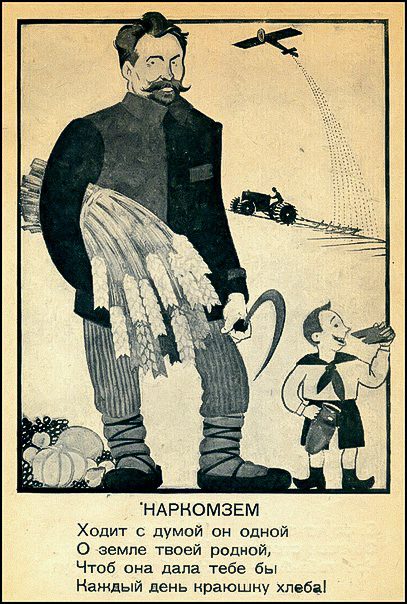
your People’s Commissars at home by Constantin Rotov and Constantin Eliseev. 1926
The Bolsheviks invented revolutionary art, experimental art, practicable by all, consumable by the masses. “Art, in the traditional world,” notes Aude de Kerros, “was an expression … of the beauty of the world, but also of the invisible, of the tragedy of life, of love, of death. In the 20th century … art becomes a political commitment, a means of changing the world, of making a revolution. Thus, art becomes a weapon of war “.
And Aude de Kerros adds that “the world of art went to war in 1917 with the political idea of a ‘global’ art, above civilizations and nations, of mass art, going ‘in the sense of history “, only modern, classifying all other expressions considered obsolete“.
In 1934, Stalin made socialist realism the only valid art, and in 1944 created the administrative body of “Soul Engineers”, a distant ancestor of the Ministers of Culture. In fact, in 1981, Jack Lang also created the corps of “Inspectors of Creation“, intended to steer art in the right direction.
State bodies are founded by the Bolsheviks to lead the art, the Narkompros: (- People’s Commissariat of Education; the Narkompros will become the Ministry of Culture in 1946), as well as the Prolekoult, of which we have already spoken.
Berlin. 1919-1933
Currently the Bauhaus school was created by Walter Gropius, but was closed by the Nazis in 1933 because it was considered a representative school of “degenerate art” (in German Entartete Kunst), and besides rife with communists.
However, in the same year of 1933, the BlackMountain College will be created in North Carolina, a free and self-governing university, on the model of the Bauhaus. This school will host Bauhaus artists fleeing Nazism. Robert de Niro Sr, father of actor Robert de Niro, will be a pupil of it. A new form of art had entered the United States, almost by breaking and entering.
1920-1960. The conquest of the intelligentsia
The USSR had devised a system designed to seduce the elites of the Western world. For this, the USSR used the concepts of “peace” and “anti-fascism“, very innocent concepts, and secretly funded associations, symposia, congresses, but which were not officially affiliated with the Communist Party. This is how naive “fellow travelers” propagated a positive image of the Soviet Union, almost without their knowledge. Which Soviet Union organized study trips to Moscow, accompanied by honorary receptions, and paid generous royalties for translations of works into Russian.
It was only after World War II that the Americans realized the extent of the undermining work carried out for decades by the Soviets. It was then that in their turn, twenty years after the Comintern, they applied the same methods (on the role of the CIA. (See “Who paid the piper”, Frances Stonor Saunders, Granta 1999, in French “Qui leading the dance? CIA and the cultural cold war ”, Albin Michel 2003).
In 1950, a “Congress for the Freedom of Culture” was held in Berlin, and in 1955 a House of World Cultures was opened there, promoting artistic trends rejected by Stalin.
From then on, the CIA, drawing on former students of Black Mountain College, such as Rauschenberg, de Kooning, Motherwell, contributed to the creation of the school of “abstract expressionism“, with artists and movements also rejected by Stalin and by Hitler.
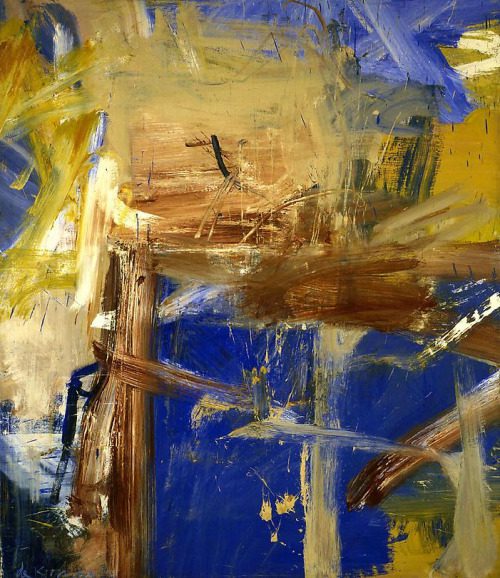
A certain Thomas Braden, an American journalist, played a pivotal role in this enterprise, after being recruited by the CIA in the 1950s.
In an exhibition organized in Berlin in 2017 at the House of World Cultures, an event called “Parapolitics, cultural freedom and cold war“, Braden retraced the adventure of this cultural cold war. In the exhibition catalog, it was written that “it was a cold war of meaning, a semantic cold war, aimed at de-legitimizing the vocabulary of the adversary …” (a critic of the Berliner Zeitung wrote “that ‘it was hard not to admire the good taste of the CIA agents “, while Die Zeit, no doubt shocked by the revelations finally made, declared” that it was opportune to consider an artistic and cultural brexit, without reprisals however“).
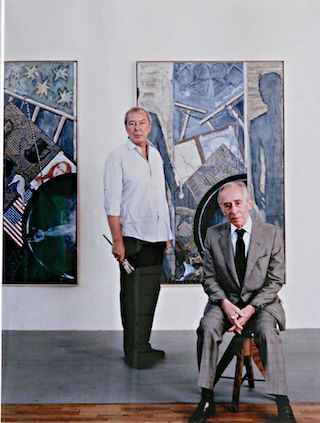
Photo Hans Namuth
At the same time, a strategy was put in place to deprive Paris of its aura of capital of the arts. In this company, a gallery owner, Leo Castelli, will play a key role; originally from Trieste, but having also fled Nazism, Leo Castelli opened a gallery in New York, on Lexington Avenue, while maintaining close links with the Museum Of Modern Art.
It must be said that Castelli also worked for the CIA, promoting suitable American artists, namely Jackson Pollock, Willem de Kooning, Robert Rauschenberg, Jasper Johns, Cy Twombly. His favorite, however, was Marcel Duchamp, settled in New York but not doing politics (which was very practical). “Artists not interested in Duchamps are of no interest to me,” Castelli proclaimed.
The CIA therefore promoted Abstract Expressionism as an ideological weapon, telling artists still based in Paris, “Come back to New York, galleries and collectors await you.“
1960. New york and speculation
“In 1960, Paris was always and again at the heart of the artistic life of the planet,” writes Aude de Kerros. Artists come to train there, meet the rest of the world, find glory. All artistic currents are present, from academism to avant-garde. Museums contain works from all eras and civilizations ”. In 1960, the capital of art, Paris still handled 60% of art transactions, ancient and modern.
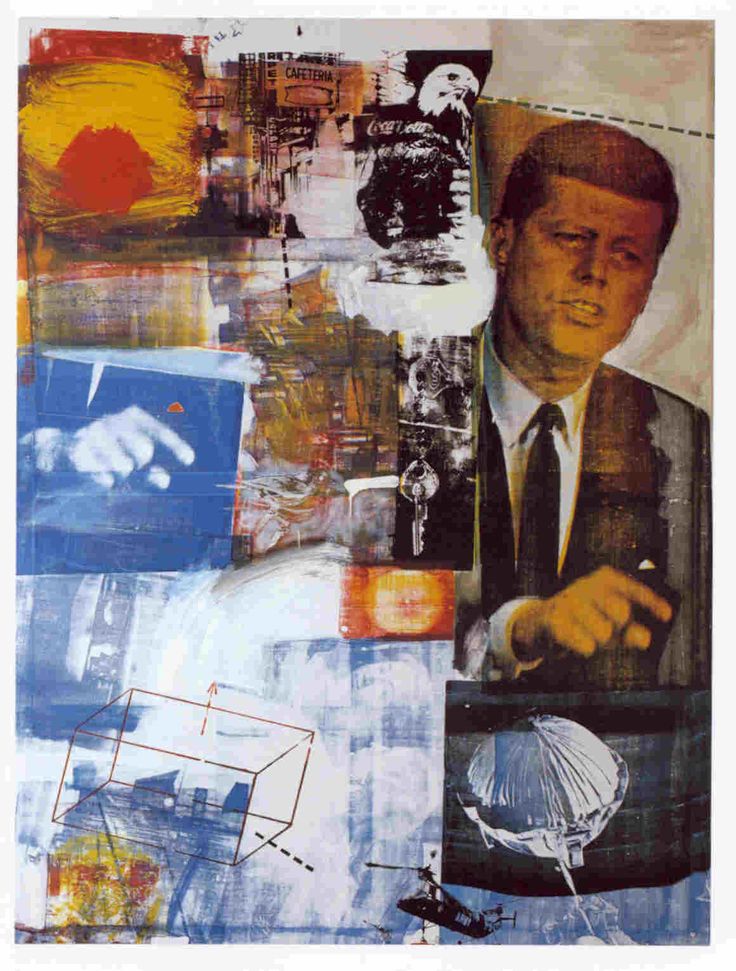
© Christie’s.
But the CIA’s strategy is starting to bear fruit. Marcel Duchamp says: “Art is everything the artist says is art“. In other words, the artwork is the concept. The form, the material object does not matter and can be subcontracted. Aude de Kerros believes that this change in the concept of “art” results in a change in the concept of “value“.
“To achieve his coup d’etat on the art of the Old Continent, adds Aude de Kerros, the strategy of networks of influence was to complete Duchamp’s theory by asserting that art in the original sense of the term was now a archaism and that today’s art could only be conceptual. This conceptual discourse catches all the enemies of the Americans by surprise: the so-called “academic” artists are “fascists” and “Hitlerites”, the Paris school is said to be “outdated”, and Soviet realism is invited to join pop – avant-garde concept. ”
Conceptual art, on the other hand, becomes unsurpassed. Henceforth an ambitious young artist no longer makes the trip to Moscow, but the trip to New York. However, we must now theorize all this.
This will be the mission of two American philosophers; Arthur Danto, first of all, philosopher and art critic, professor at Columbia University, who wrote in 1964 an article entitled “The transfiguration of the banal“, in which he explains that the work of art is a subject of interpretation. Then George Dickie, then, professor at the University of Chicago, who invented the concept of analytical aesthetics. These two professors state that “Art is what society says is art“.
The body of theory is now in place which enables New York to silence Europe. In this theory, the work of art is stripped of its aura, it is simply a commodity put on the market and imposed without it being necessary for it to have been elected by the public. Léo Castelli and collectors are delighted, the value of a work of art is no longer fixed by artists and the public, suffice it to say that it is art, and it is art .
Aude de Kerros notes that at the same time, President Nixon suspended the convertibility of the dollar to gold, dematerializing the currency. “Art and money will gradually become strictly scriptural, financial, conceptual values.”
1970. Submission
“The semantic break between modern art belonging to the past and contemporary conceptual art has now been established … it was therefore possible to conquer the market“. The strategy the Americans will use to eclipse Paris will be to use international fairs to force galleries to go through their mold. Admittedly, a fair had existed since 1893, the Venice Biennale. But others made their appearance.
First, the Sao Paulo fair was created in 1951, then the Documenta in Kassel, Germany, in 1955; this one, created by the CIA, was aimed at “reconciling the Germans with modern art“, but a modern denazified art of course. These fairs became more and more commercial, and more and more American galleries were seen there. In 1957 was created Art Cologne, then the Foire de Bвle in 1970. In 1974, the FIAC was created in Paris, initially shunned by the Parisian galleries, but the commercial success ended by appeasing them.
What counts in these fairs is the Selection Committee: it is he who decides which gallery will participate (therefore sell), and which gallery will not. It will still take 20 years to impose “Duchampian” exclusivity, but the Americans succeeded. The selection committees gradually asserted their power, for example through the 20% rule: 20% maximum of French artists, no more. The New York gallery Castelli then imposed its law; in 1966, the Daniel Templon gallery opened in Paris, became a “friend” of the Castelli gallery, and launched American artists in France.
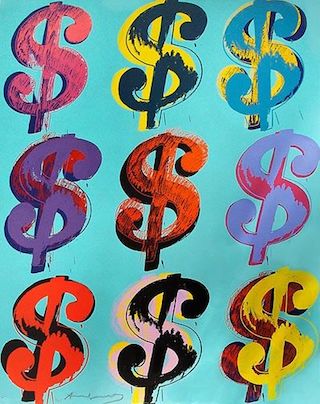
Even Georges Pompidou will fall into the trap. American collector friends had suggested that he subsidize and ensure the careers of leftist artists in order to better control them after May 68. In 1977, the Beaubourg Center was therefore opened, but from its first exhibition, which was called “Paris-New -York (1908-1918) ”, the Paris-New-York axis was institutionalized.
New York triumphed, it was the time when, in the field of philosophy, Derrida, Deleuze and Foucault met in the United States to present there the “deconstruction”, which was hijacked by the Americans (see Season 1, episodes 1,2,3).
From there, any artist in search of consecration had to go through New York. “Contemporary Art”, which in fact was, purely and simply, conceptual art, then became “A.C”, according to its initials. Any art not labeled in New York fell into the dustbins of history.
1980-1990. And here are the pension funds
For Aude de Kerros, American and Japanese pension funds, because of the immense liquidity at their disposal and the need to invest, have played an important role in the soaring art prices.
But that’s not all, we have to say a final word on France. As Aude de Kerros notes, France, from 1981, created an official art, the high priest of which was Jack Lang. The latter invented, as we have seen, the body of “Inspectors of Creation“, which ultimately led to the bureaucratization of art. But above all, this administrative body reinforced the supremacy of New York. Indeed, the inspectors visited this city regularly in order to tour the galleries and acquire works by emerging American artists, for the Center Pompidou for example. The “Inspectors of Creation” dubbed American conceptual art, with state competition weakening Parisian galleries.
Aude de Kerros adds that “New York has become the center of the contemporary art world. Moscow no longer exists, Paris is fading away “.
1991. The triumph of American soft power
1991 is the year of the fall of the Soviet Union, the cultural cold war no longer exists, the United States wields hegemonial power; de facto, military competition having temporarily taken a back seat, cultural influence becomes priority, with two objectives: definitively marginalizing Paris and making conceptual art predominate (AC). Thus, thanks to the globalization orchestrated by the United States, the ambition is to promote an uninhibited commercialism and a global culture. The mercantile and multicultural International replaces the Communist International which sank body and property.
As Christine Sourgins, art historian, essayist and writer, notes: “The paradox is that a libertarian, transgressive intellectual discourse has played into the wildest commercialism. The CA conceals an investment product, an apotheosis of the commercial world, where it suffices to name the value for it to be, as Duchamp did, describing everyday objects “ready-made”, an object of art “.
Don’t miss the continuation of the series At the dawn of the 21st century
Next Season: At the source of American soft-power
Part 1 / Cold war and “Kulturkampf”. Online Tuesday March 9
Publishing calendar
À l’aube du XXIéme siècle
by Jacques Trauman
Saison 1
La « French Theory » et les campus américains
Episode 1. Erudition et savoir faire. Jeudi 25 février
Episode 2. Citer en détournant. Vendredi 26 février
Episode 3. Le softpower américain. Samedi 27 février
Saison 2
Comment New-York vola l’idée d’art moderne
Episode 1. Du Komintern à la bannière étoilée. Mardi 2 mars
Episode 2. En route pour la domination mondiale. Mercredi 3 mars
Episode 3. L’apothéose de Pollock. Jeudi 4 mars
Episode 4. La guerre froide de l’art. Vendredi 5 mars
Saison 3
Aux sources du softpower américain
Episode 1. Guerre froide et « Kulturkampf ». Mardi 9 mars
Episode 2. Quand les WASP s’en mêlent. Mercredi 10 mars
Episode 3. Ce n’était pas gagné d’avance. Jeudi 11 mars
Episode 4. Un cordon ombilical en or. Vendredi 12 mars
Heading illustration: © The Andy Warhol Museum, Pittsburgh IA1994.7/Licensed by Bildrecht Wien, 2020


